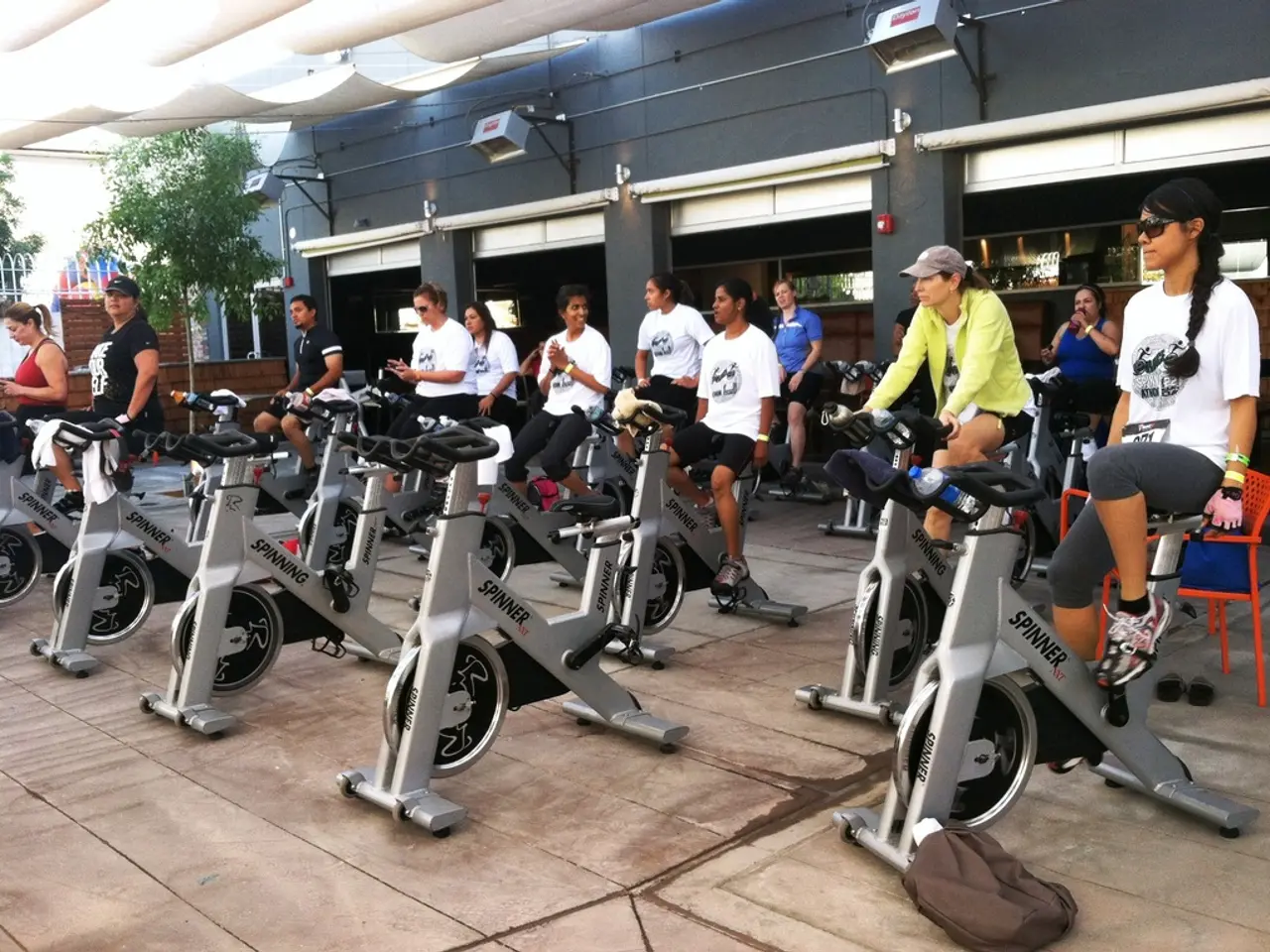Strategies for Continuously Monitoring Your Fitness Success
In the pursuit of health and fitness goals, tracking progress is essential. It offers motivation, accountability, adjustment, goal clarity, and prevents plateaus. This article provides a guide on how to efficiently track fitness progress using various tools.
Body Measurements ------------------
Regular measurements are crucial for monitoring changes in body dimensions such as waist, hips, and arms. Use a tape measure and take these measurements consistently to track fat loss and muscle gain over time. Progress photos, taken under similar lighting and conditions, also serve as a powerful visual confirmation of changes that numbers might not fully capture.
Workout Logs ------------
Keeping a workout journal is essential for tracking strength gains and endurance improvements. Record every workout, including exercises, sets, reps, and weights used. Utilize apps like StrongLifts or GymOS to log workouts and track progress over time.
Wearable Devices ----------------
Fitness trackers, such as Fitbit or Garmin, can track steps, heart rate, sleep, and other metrics to provide a comprehensive view of fitness and health. Monitoring heart rate and sleep is crucial for understanding physical activity levels and recovery.
Nutrition Tracking ------------------
Apps like MyFitnessPal or Lifesum help track daily calorie intake and nutrient composition, ensuring that dietary goals are met. Use apps to plan meals and track nutritional intake, which is essential for supporting fitness goals.
Additional Tips ---------------
- Set specific, measurable fitness goals to guide tracking efforts. - Use progress visualization tools, such as graphs and charts from apps, to visualize progress and stay motivated. - Combine data from workout logs, nutrition tracking, and wearable devices to get a holistic view of fitness progress.
For muscle gain, track strength improvements (weight lifted, reps) in a workout log. Monitor body measurements (arms, chest, thighs) and track calorie and protein intake to ensure muscle building nutrition. For endurance training, track running or cycling distance, pace, and time. Use a heart rate monitor to measure cardiovascular improvements and record how you feel after workouts to avoid overtraining.
Body composition measurements, whether by skinfold calipers, bioelectrical impedance scales, or more advanced methods like DEXA scans, are invaluable for understanding changes in muscle and fat mass. For those wanting deep insight, tracking biomarkers can help: blood pressure, blood glucose, hormone levels, and sleep quality.
To set up an effective tracking system, define clear goals, choose relevant metrics, decide on frequency, use the right tools, record and reflect on data, and be consistent. Common pitfalls in tracking fitness progress include weighing oneself too frequently, focusing solely on the scale, inconsistent measurements, ignoring non-physical progress, lack of patience, and not analyzing data correctly.
Measurable improvements in body measurements, performance metrics, health and wellness indicators can provide evidence of progress. Metrics to track may include weight, body fat percentage, circumference measurements, progress photos, strength, endurance, flexibility, resting heart rate, sleep quality, energy levels, mood and stress levels, nutrition, and sleep quality.
Consistency is key in tracking fitness progress. Take measurements at the same time of day, under similar conditions, and at regular intervals. Maintaining motivation to consistently track fitness progress can be supported by building it into your routine, using reminders, sharing your progress with friends or online communities for accountability, and rewarding yourself when you reach milestones.
- In the pursuit of health and fitness goals, tracking progress is vital for monitoring changes, offering motivation, accountability, adjustment, and preventing plateaus.
- Regular measurements of waist, hips, and arms can help track fat loss and muscle gain over time, and progress photos serve as a powerful visual confirmation of changes.
- Keeping a workout journal is essential for tracking strength gains and endurance improvements, recording exercises, sets, reps, and weights used.
- Fitness trackers like Fitbit or Garmin can provide a comprehensive view of fitness and health, tracking steps, heart rate, sleep, and other metrics.
- Apps like MyFitnessPal or Lifesum help track daily calorie intake and nutrient composition, ensuring dietary goals are met for supporting fitness objectives.
- Setting specific, measurable fitness goals guides tracking efforts, and using progress visualization tools like graphs and charts from apps helps visualize progress and stay motivated.
- For muscle gain, track strength improvements in a workout log, monitor body measurements, and ensure muscle building nutrition by tracking calorie and protein intake.
- For endurance training, track running or cycling distance, pace, and time, and use a heart rate monitor to measure cardiovascular improvements.
- Body composition measurements can help understand changes in muscle and fat mass, be it by skinfold calipers, bioelectrical impedance scales, or more advanced methods like DEXA scans.
- Biomarkers like blood pressure, blood glucose, hormone levels, and sleep quality can provide deep insight for those wanting to delve deeper into their progress.
- To set up an effective tracking system, define clear goals, choose relevant metrics, decide on frequency, use the right tools, record and reflect on data, and be consistent in tracking for measurable improvements in body measurements, performance metrics, health, and wellness indicators.




